Mega Archive CD: Part VII: From Ecco the Dolphin to Jangou World Cup
By Mento 1 Comments
Welcome back once again to another Mega Archive CD, the glossy, reflective younger brother of the Mega Archive archival/research wiki project. Most Sega fans are celebrating this month by playing the new Like a Dragon spin-off, The Man Who Erased His Name, but I'm too cool for all that. I'm instead poring over the data for early CD-ROM experiments released thirty years ago, many of which have been forgotten and many of those for good reason.
We have one last check-in for the Sega CD/Mega-CD platform before the year is done, bringing us up to the end of summer 1993 if not quite into September where the Mega Archive currently sits (both the next Mega Archive and Mega Archive CD will focus on that particular month). While the regular Mega Drive/Genesis release schedule has been all but supplanted by western developers by 1993—the 16-bit system continuing to be the market leader in both North America and Europe—the Sega CD still enjoys a considerable degree of first- and third-party support in its homeland: almost every game in Part VII comes from Japan, and most from Sega directly. In another parallel with the early Mega Drive library, many of the best games this entry are shoot 'em ups: a genre that once dominated the system and the arcades alike before the advent of fighter games (and the advent of rhythm games after that). Otherwise, it's just your regular mix of enhanced Mega Drive ports, computer game conversions, FMV indulgences, and anime tie-ins.
Before we begin, however, be sure to check out this spreadsheet of all things Mega Archive for previous entries and upcoming games.
Part VII: CD58-CD67 (July '93 - August '93)
CD58: Ecco the Dolphin
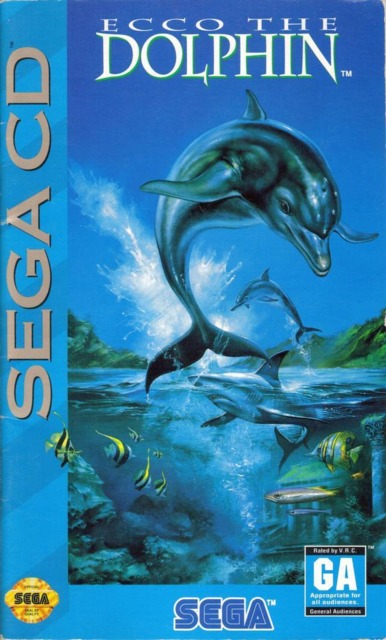
- Developer: Novotrade
- Publisher: Sega
- JP Release: N/A
- NA Release: July 1993
- EU Release: August 1993
- Franchise: Ecco the Dolphin
- Genre: Aquatic Tomfoolery
- Theme: Ecco Location? Right Here on Sega CD
- Premise: Basically The Abyss if dolphins sorted everything out before the humans got involved.
- Availability: The original MD Ecco can be bought on Steam as well as its two MD sequels. There was also a 1995 PC version that was specifically based on this enhanced port. Last, the Sega Genesis Mini 2 has the CD version of Ecco the Dolphin (the first had the MD version).
- Preservation: We have a few Mega Drive ports this entry, including everyone's favorite mercilessly obtuse bottlenose dolphin simulator (covered in Mega Archive: Part XXV). As with many of these Mega Drive to Sega CD ports the only thing that's really changed is the music and sound effects, the game naturally opting for some chilled out trance BGM business befitting a game full of dolphins and crystals and cooperating with each other for a brighter tomorrow. You know, hippy shit. (Composed by Spencer Nilsen, incidentally, who also worked on a great many other Sega CD games as something like the in-house composer for Sega of America at the time.) It's no Aquatic Ambience but it's not bad. In addition to the audio, the Sega CD version does have a few extra levels but they don't show up until way later.
- Wiki Notes: Needed some SCD-specific releases and screenshots. (I say it needs screenshots, but it's visually identical to the MD version.)
CD59: Dynamic Country Club
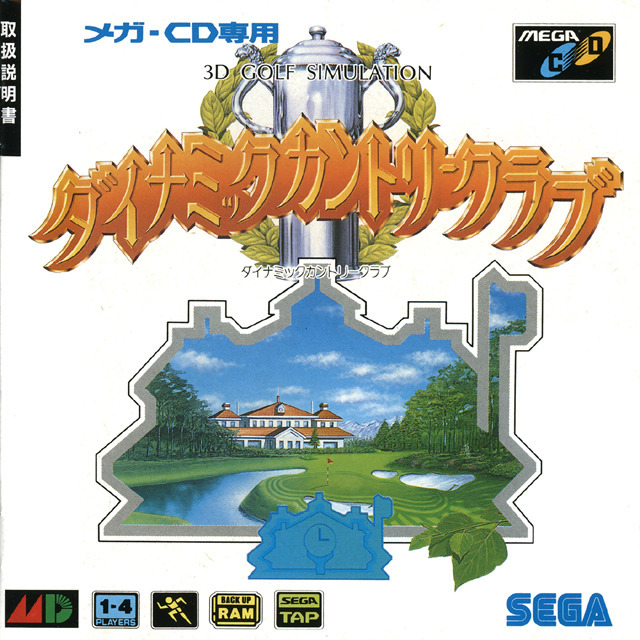
- Developer: Sega
- Publisher: Sega
- JP Release: 1993-07-16
- NA Release: N/A
- EU Release: N/A
- Franchise: N/A
- Genre: Golf
- Theme: Golf
- Premise: Golf
- Availability: Neither the Sega CD or arcade version of this game was released outside of Japan.
- Preservation: Sweet, a boring golf game. There aren't too many golf sims for Sega CD, just this and a 1994 port of Links: The Challenge of Golf (a western computer golf franchise) and both were exclusive to their respective regions so golf fans were really spoilt for choice. Didn't help that they were both ports too; Sega originally put this out in arcades back in 1991. Sega's clearly going after T&E Soft's territory here, which at the time were releasing many entries in their "New 3D Golf Simulation" series which used a similar form of fake 3D to give the courses a more realistic feel: after all, it's easier to know where to hit towards if you can sorta make out a few pixels that may or may not be a flag in the far distance. Easier to just use the mini top-down map, really, but the verisimilitude is nice to have I suppose. Super big on the customization settings too, to the extent that you can even choose your own caddy each with their own voiceover clips (this selection being entirely female for some reason; was that all that women were allowed to do in golf at the time? Grim stuff).
- Wiki Notes: Brand new page. I didn't realize we had any gaps for the Sega CD, since its library isn't exactly enormous, but I could see why this dry, JP-only golfing sim may have fallen through the cracks.
CD60: Arcus I-II-III
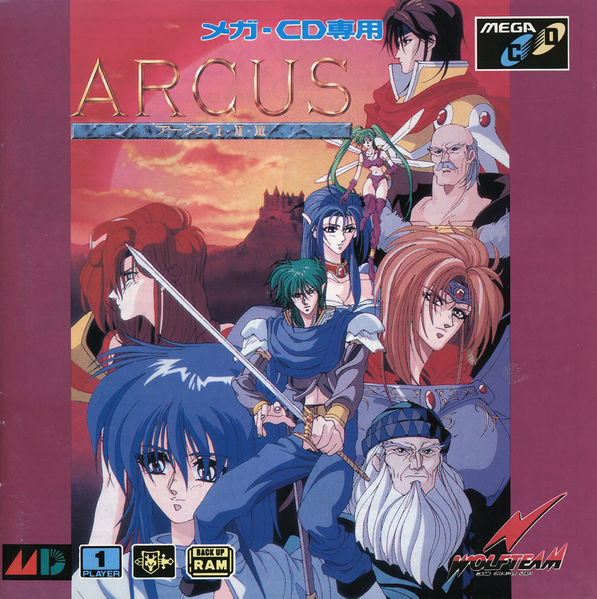
- Developer: Wolf Team
- Publisher: Wolf Team / Telenet Japan
- JP Release: 1993-07-23
- NA Release: N/A
- EU Release: N/A
- Franchise: Arcus
- Genre: Action RPG
- Theme: A Triple Threat of Dungeon Crawlers
- Premise: Were you one of the eight people who bought Arcus Odyssey and loved it? Well, do we have the back-catalog-scraping compilation for you.
- Availability: These games aren't available anywhere any more, unless Wolf Team squeezed them into a Tales game without anyone noticing.
- Preservation: Possibly buoyed by any success Arcus Odyssey [Mega Archive Part IX] may have enjoyed, Wolf Team took it upon themselves to completely overhaul the first three games in their Arcus series and release them as a compilation for Mega CD. It's sort of like when a Japanese company remakes Might and Magic or Wizardry for a console, except I imagine it's an easier process when they're all your own games. Since it's a Mega CD game, it also has a bunch of anime cutscenes and CD music shoehorned in, but I imagine long-time fans of this series were very happy with the improvements and additions as well as those curious few who liked Odyssey and wanted more adventures with those characters (they all appear in the first Arcus too). Should be noted that while Odyssey was this odd isometric Gauntlet action-RPG, these three Arcuses (Arcii?) are all traditional first-person dungeon crawlers. (The second originally wasn't, but I guess they forced it to obey conformity with this remake.) Westerners never saw this game of course, because why would we? Working Designs were the only US publishers crazy enough to localize a Japanese RPG with voiceovers at the time, and they had their hands full elsewhere.
- Wiki Notes: Just some text and a header image. My fellow Falcom nut @bowl-of-lentils had passed through here, saving me some work.
CD61: 3x3 Eyes: Seima Densetsu
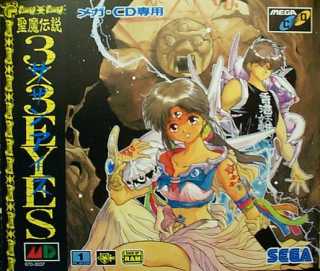
- Developer: Sega
- Publisher: Sega
- JP Release: 1993-07-23
- NA Release: N/A
- EU Release: N/A
- Franchise: 3x3 Eyes
- Genre: RPG
- Theme: Supernatural Anime Business
- Premise: What's a three-eyed gal to do when the nice guy you just met is suddenly murdered by a bird demon? Eat his soul and make him your immortal servant, of course.
- Availability: Licensed game, so nope.
- Preservation: We've got a couple of anime licensed games this week, making full use of the Mega-CD's capacity for FMV to create a multimedia showcase. As a game, though, 3x3 Eyes is a little too ordinary considering multiple Sega divisions (and two outside contractors) are behind it: feels more like the game's there to prop up the anime scenes rather than the preferred inverse. Truth be told, I didn't see enough of it to get to any battles (there's a lot of running around Tokyo talking to people first, and I'm not fluent enough to handle that) but from witnessing it in action elsewhere it doesn't strike me as particularly inspired. 3x3 Eyes was a long-running (we're talking 25 years here, though it was still only a spry six years old when this game came out) manga from Yuzo Takada, who was also the character artist for the Famicom Enix RPG Just Breed (yikes). The plot involves Pai, one of the titular three-eyed demon elf girls looking to transform herself into a human like the rest of her kind, and the streetwise charmer Yakumo who inadvertently becomes her undead protector. 3x3 Eyes will probably be the subject of a Game OVA episode eventually, except it has a great number of video game adaptations and they're all impenetrable (to the non-fluent) RPGs and adventure games. Regardless, much like Ranma ½, despite being prolific elsewhere it was a one-and-done as far as Sega consoles were concerned.
- Wiki Notes: Text and deck. Also a header image. The screenshots and release were already there though; we must have some 3x3 Eyes fans in the house.
CD62: Android Assault: The Revenge of Bari-Arm / Bari-Arm
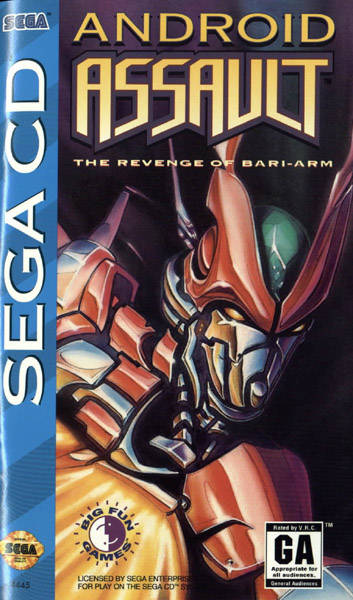
- Developer: Human
- Publisher: Human (JP) / Big Fun Games (NA)
- JP Release: 1993-07-30 (as Bari-Arm)
- NA Release: October 1994 (as Android Assault: The Revenge of Bari-Arm)
- EU Release: N/A
- Franchise: N/A
- Genre: Shoot 'em Up (Horizontal)
- Theme: The Fusion of Ships and Mechas (a.k.a. Techs-Mechs)
- Premise: Mankind is colonizing the stars and any attempts to suppress us will be met with deadly force. Hey, hi, we're the good guys.
- Availability: Nope. I believe Spike Chunsoft owns the IP now, but they don't really focus on retro stuff.
- Preservation: It always warms my heart to see a shoot 'em up on here, since they were ubiquitous for the early Mega Drive and slowly died out as other genres became more popular. Android Assault/Bari-Arm is a fairly standard horizontal shoot 'em up that uses the mecha transformation gimmick we've seen in a few MD games before, like Arrow Flash and Heavy Unit, and an upgrade system that favors sticking with one color-coded type and constantly upgrading it (while avoiding the other types lest they downgrade you back to the first tier). It certainly looks and sounds good; the former being a relatively late 16-bit game and the latter due to the Sega CD's audio capabilities. Human dabbled in many genres, but are best known for adventure games like Clock Tower along with the Fire-Pro Wrestling franchise (which saw a sneaky Mega Drive iteration in Thunder-Pro Wrestling Retsuden), and less so for shoot 'em ups like this. We won't see any more of their games on either Mega Archive or Mega Archive CD, but they were very busy on the Sega Saturn if I ever decide to encroach on @borgmaster's territory.
- Wiki Notes: Text and deck. Gave it a suitably cool header image also.
CD63: Cyborg 009
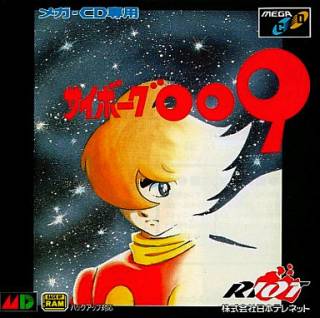
- Developer: Telenet Japan
- Publisher: Riot
- JP Release: 1993-07-30
- NA Release: N/A
- EU Release: N/A
- Franchise: Cyborg 009
- Genre: Side-scrolling shooter
- Theme: '60s Superhero Cyborgs With Cool Hair
- Premise: Nine regular people are kidnapped and turned into cyborgs to wage war on humanity, but are instead rescued by a sympathetic scientist and turn the tables on their abductors.
- Availability: Licensed game.
- Preservation: From androids to cyborgs, we have our second anime license for this Mega Archive CD and the source is a real vintage of the medium. Cyborg 009 was a manga created by Osamu Tezuka, one of several hundred projects of his, that debuted in 1964 and continued well into the 1980s, with a few movie adaptations here and there (in fact, I think it's getting rebooted again soon). The titular 009 is the ninth and last of this group of abductees, but debatably the most powerful having been granted super strength, super speed, and near invincibility by his cybernetics. The game takes some ideas from the manga, mixing a few plotlines together, and throws some goofy-looking bosses at you between side-scrolling shooter levels that are vaguely Contra-esque, though much easier given 009's nigh-invulnerability (which in video game terms just means a pretty beefy HP bar). I suppose I'll make this a tentative Game OVA candidate too; neither of its game adaptations (there's one for SFC too) were all that great, but they weren't hard to follow either.
- Wiki Notes: Just text and a header image. Pattern emerging this month.
CD64: Silpheed
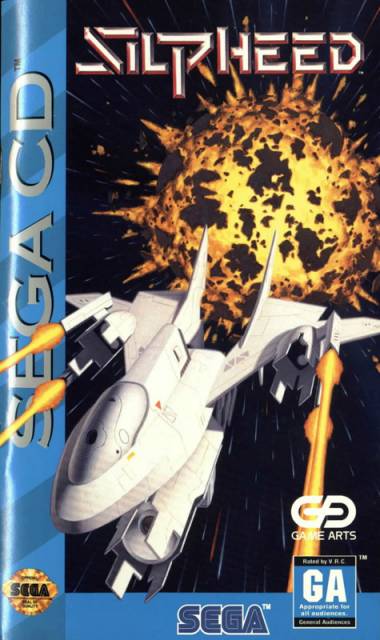
- Developer: Game Arts
- Publisher: Game Arts (JP) / Sega (NA/EU)
- JP Release: 1993-07-30
- NA Release: October 1993
- EU Release: September 1993
- Franchise: Silpheed
- Genre: Shoot 'em Up (Z-Axis)
- Theme: FMV-empowered Space Explosions
- Premise: When life blows up your home planet, make lemonade
- Availability: The Sega CD Silpheed is available on the second Sega Genesis Mini. Not sure where you'd get the PC version though.
- Preservation: Here's a big one among Sega CD fans. Silpheed was a home computer shoot 'em up that was built to take advantage of the tech on Japanese PCs at the time, making use of early polygonal graphics to give it some extra oomph. Original developers Game Arts, already well-established on the Sega CD thanks to Lunar and others, figured Silpheed was due for a renaissance and pulled off the same trick by having it demonstrate what the platform could do. The SCD Silpheed similarly uses polygons for its ships, but goes one step further by having FMV featuring pre-rendered polygonal graphics play in the background as you focus on the approaching waves of enemies. It can make the framerate stutter a bit, but the resulting effect as you weave around bullets while witnessing enormous space battles happening just adjacent must have been very impressive for 1993. It's a pretty normal shoot 'em up for the era without the spectacle, but I won't argue it doesn't add to its memorability.
- Wiki Notes: Just some releases. Fellow mod @fisk0 is a big fan of this game, so I think he did much of the work here already. The page already had a header image, but it was low-res and came out blurry. Some inside baseball: When I come across headers like this, I try to recreate the image as best as I can in a higher def to honor the original uploader's wishes. Since it was a split-second scene of a capital ship in the background exploding into polygons, I was pretty fortunate to have hit the screenshot button at that moment.
CD65: Egawa Suguru no Super League CD
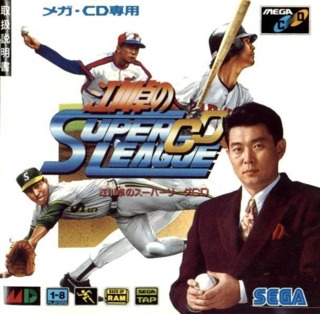
- Developer: Sega
- Publisher: Sega
- JP Release: 1993-08-06
- NA Release: N/A
- EU Release: N/A
- Franchise: Super League
- Genre: Baseball
- Theme: Baseball
- Premise: Baseball
- Availability: Nope. Of all the 16-bit baseball games for Sega to bring back, it probably won't be the one that would require royalties.
- Preservation: I think it shows a tremendous amount of restraint on the leagues (super or otherwise) of Japanese developers that deal in endless baseball games that we're only now getting the Sega CD's second one after almost two years. More so, that Sega put both of them out themselves: the previous was in fact this game's direct predecessor, Pro Yakyuu Super League CD [Mega Archive CD II]. In 1993 there continued to be an untapped market for those looking to bring the World's Most Boring Sport to a cutting-edge optical media frontier of fancy audio and grainy FMV, but we get a bit of both of those here as the game boots up so you can't argue it isn't fulfilling some of that potential. Egawa Suguru was a fairly heel-like pitcher that eventually left the sport close to his peak and became an analyst, which is the role he occupies here as a Madden-type commentating on games and offering some tips about your opponent's strengths and weaknesses. There wasn't another Super League after this so I'm guessing the celebrity endorsement didn't help much.
- Wiki Notes: Brand new page. Getting a wiki workout this entry. A wikork- wikou- Nope, bailing.
CD66: Keio Flying Squadron
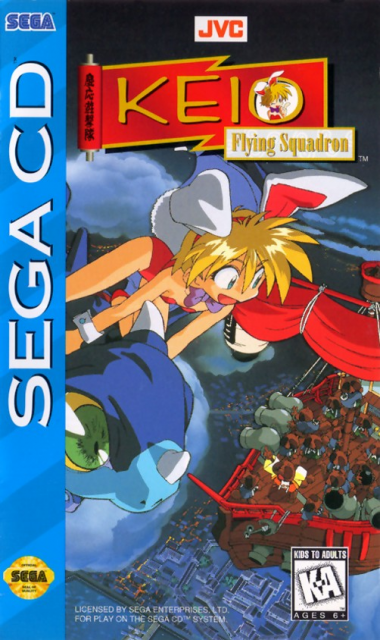
- Developer: Victor Entertainment
- Publisher: Victor Entertainment (JP) / JVC Musical Industries (NA/EU)
- JP Release: 1993-08-06
- NA Release: February 1995
- EU Release: October 1994
- Franchise: Keio Flying Squadron
- Genre: Shoot 'em Up (Horizontal)
- Theme: Underaged Bunny Girls Riding Dragons into Battle
- Premise: A genius-level tanuki has stolen the key to an ark full of advanced alien technology, and only the part-alien caretaker and her pet dragon are capable of recovering it, even if it means defeating anthros, dragons, Shinto gods, and the US and Russian militaries. This is all set in the 19th century, incidentally.
- Availability: Sadly not available.
- Preservation: Keio Flying Squadron is the Sega CD's answer to Cho Aniki, Parodius, and all the other comedic shoot 'em ups that were showing up the overly serious R-Types and Gradii that were dominating the space. Of course, cute anime girls with tiny hitboxes would eventually become the norm rather than the exception for this genre once the Touhou era arrived, but here it was enough of a novelty to draw in a crowd amused by its unpredictable and irreverent antics. Being a Sega CD game it also benefitted from (what else?) some animated cutscenes, but these were done professionally by major anime creators Studio Pierrot: a company that at the time was popular due to exorcist action show YuYu Hakusho but would eventually grow to monolithic heights with Naruto and Bleach a decade later. Keio Flying Squadron saw a couple sequels despite its low initial sales, evidently picking up a cult fandom at some point. I'm guessing it was mostly Sega CD fans looking for something, anything, to play that wasn't FMV garbage. But that's just a guess.
- Wiki Notes: Absolutely no work needed.
CD67: Jangou World Cup
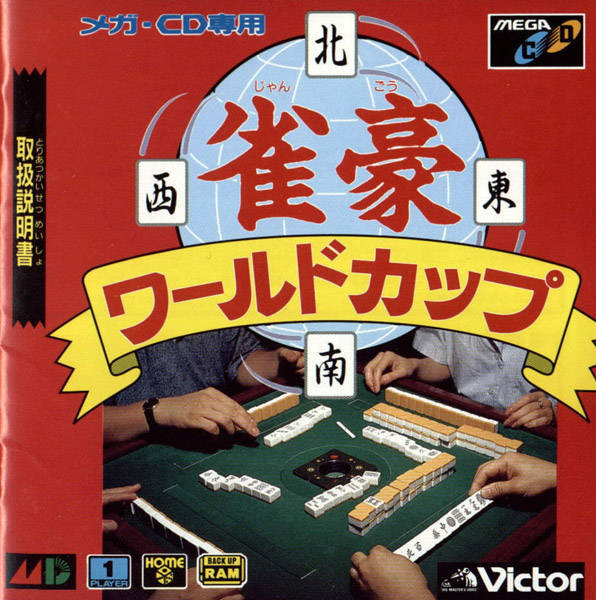
- Developer: Victor Entertainment
- Publisher: Victor Entertainment
- JP Release: 1993-08-27
- NA Release: N/A
- EU Release: N/A
- Franchise: Jangou
- Genre: Mahjong
- Theme: Board Games
- Premise: Droppin' tiles and makin' piles. Of money.
- Availability: I sincerely doubt it.
- Preservation: Finally, the Jango Fett Star Wars soccer game we've all been waiting for. Easier to take all those headers when you're wearing a beskar steel helmet. Nope, just kidding, Jangou refers to an expert-level mahjong player so the title would suggest some kind of battle royale between the world's (though let's be real, it's probably just Japan and maybe China) best mahjonggers. The Riichi-Elite(e)s. The Illumahjongi. In other words... it's another mahjong game! Hooray! Though like baseball games they're surprisingly thin on the ground here on the Sega CD, as opposed to the SFC where they were already up to a dozen of both by late 1993. (By the by, the only other mahjong game for Sega CD so far is the manga-based Gambler Jiko Chuushinha 2: Gekitou! Tokyo Mahjong Land Hen [Mega Archive CD Part IV].) I suspect the offices of Victor Entertainment were getting a little too rowdy and zany during Keio Flying Squadron's production cycle so they probably made this exceptionally dry board game sim at the same time to even out the mood. Beyond some traditional eastern music, there's not much "CD"-ish about this game—apparently part of a long-running computer mahjong series by Victor—though there's a certain chunkiness to the sound of the tiles being placed that makes it more exciting than it probably should be. This game may not be about Star Wars bounty hunters after all, but make no mistake: you still spend the whole time searching for Han. That's a mahjong joke. I'm trying, here.
- Wiki Notes: Screenshots and text.
